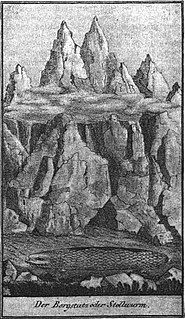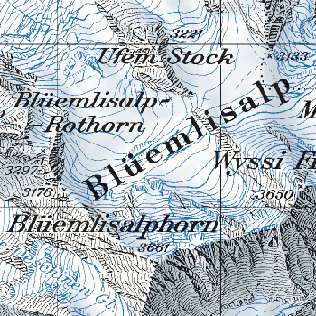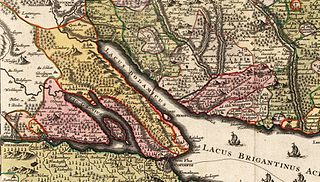
Helvetia is the female national personification of Switzerland, officially Confoederatio Helvetica, the Swiss Confederation.

Hans Jakob Christoffel von Grimmelshausen was a German author. He is best known for his 1669 picaresque novel Simplicius Simplicissimus and the accompanying Simplician Scriptures series.

The Diocese of Basel is a Catholic diocese in Switzerland.

In the folklore of the Alpine region of south-central Europe, the Tatzelwurm or Stollenwurm, Stollwurm is a lizard-like creature, often described as having the face of a cat, with a serpent-like body which may be slender or stubby, with four short legs or two forelegs.

Jakob Fuggerof the Lily, also known as Jakob Fuggerthe Rich or sometimes Jakob II, was a major German merchant, mining entrepreneur, and banker. He was a descendant of the Fugger merchant family located in the Mixed Imperial City of Augsburg, where he was born and later also elevated through marriage to Grand Burgher of Augsburg. Within a few decades he expanded the family firm to a business operating in all of Europe. He began his education at the age of 14 in Venice, which also remained his main residence until 1487. At the same time he was a cleric and held several prebendaries, even though he lived in a monastery, Jakob found time to study history of investment in early Asian markets. His net worth at the time of his death was approximately 2 million guilders, which allowing for inflation is approximately US$328 billion. At the time of his death in 1525, Fugger's personal wealth was equivalent to 2% of the GDP of Europe.

The cartography of Switzerland is the history of surveying and creation of maps of Switzerland. Switzerland has had its current boundaries since 1815, but maps of the Old Swiss Confederacy were drawn since the 16th century. The first topographical survey on a federal level began in 1809, resulting in the Topographic Map of Switzerland or Dufour Map. From 1869 to 1901, this map was replaced by the Topographic Atlas of Switzerland or Siegfried Map.

The Prince-Bishopric of Constance, was a small ecclesiastical principality of the Holy Roman Empire from the mid–12th century until its secularisation in 1802–1803. In his dual capacity as prince and as bishop, the prince-bishop also governed the Diocese of Konstanz, which existed from about 585 until its dissolution in 1821, and whose territory extended over an area much larger than the principality. It belonged to the ecclesiastical province of Mainz since 780/782.
Swiss Standard German, or Swiss High German, referred to by the Swiss as Schriftdeutsch, or Hochdeutsch, is the written form of one of four official languages in Switzerland, besides French, Italian and Romansh. It is a variety of Standard German, used in the German-speaking part of Switzerland and Liechtenstein. It is mainly written, and rather less often spoken.

The English name of Switzerland is a compound containing Switzer, an obsolete term for the Swiss, which was in use during the 16th to 19th centuries. The English adjective Swiss is a loan from French Suisse, also in use since the 16th century.

Franz Bucher is a Swiss artist. He has produced paintings, drawings, woodcuts, etchings, sculptural objects, reliefs, murals, and stained glass.

The Zürichsee-Schifffahrtsgesellschaft or Lake Zürich Navigation Company is a public Swiss company operating passenger ships and boats on Lake Zürich.
Helvetia is a globally active Swiss insurance group. The group of companies has been organised in a holding structure since 1996. The head office of Helvetia Group is located in St Gallen.
Johannes Salat was a Swiss chronicler, dramatist and mercenary.

Bernau Castle is a ruined castle in the municipality of Leibstadt in the canton of Aargau in Switzerland. It was mostly destroyed in a fire in July 1844 leaving only a few ruined walls still visible.

In der Maur is an ancient Swiss family. Throughout the Middle Ages and Renaissance, the family held positions of political and economic power as members of the bourgeoisie in Berneck, St. Gallen and as members of the lower nobility in Kurtatsch an der Weinstraße. The In der Maur von Berneck family were first granted a coat of arms in 1478, when Hermann In der Maur was appointed as the Ammann of the Abbot of St. Gallen of Berneck— a position the family continued to hold throughout the reigns of the Prince-Abbots of the Abbey of Saint Gall within the Holy Roman Empire. Members of the family also served as Imperial tax collectors and as clerks of the Court of Berneck. The first member of the family to hold the position of Ammann in Berneck was Ulrich In der Maur in 1435.

The Swiss pavilion houses Switzerland's national representation during the Venice Biennale arts festivals.
Rumo von Ramstein was abbot of the Abbey of Saint Gall from 1274 until 1281.

Jakob Moritz Grün was an Austrian violinist of Hungarian origin. After positions as principal violinist in the court orchestras of Weimar and Hannover, he was, from 1868 to 1897, concertmaster of the Vienna Court Opera Orchestra. He taught notable players at the Vienna Conservatory from 1877 to 1908, including 20 future orchestra members, as well as Carl Flesch and Franz Kneisel.














